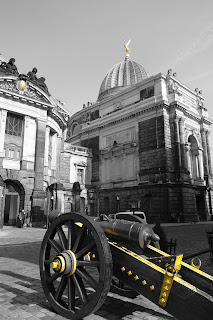相信大家對迪士尼動畫片頭必定出現的睡美人城堡一定很熟悉!
但是這座夢幻城堡的靈感從何而來呢?
答案就是德國南部的「新天鵝堡」!
I believe everybody is familiar with the castle in the opening of all Disney animation!
But, where did it come from?
The answer is located in southern Germany. The famous "Neuschwanstein"!
身為德國著名景點之一的新天鵝堡,其背後的歷史故事自然也不可少。
下令建造此座遠近馳名的夢幻城堡的是巴伐利亞王國的第四任國王 - 路德維希二世 (Ludwig II. 全名:Ludwig Otto Friedrich Wilhelm von Wittelsbach)。
1845年八月二十五日,路德維希二世出生於慕尼黑「寧芬堡」,1864年三月十日登基,並在執政期間規劃建造了數座城堡,其中以新天鵝堡、林德霍夫堡以及海倫基姆湖宮最為著名。1886年六月十三日過世於慕尼黑郊外「史坦貝格湖」。
(關於路德維希二世及其家族等生平,以及上述所提及的其餘城堡景點,都會在之後另著文章介紹,還請各位多多指教!)
As one of the most famous touristic spots, there're a lot of stories around Neuschwanstein.
It was the fourth king of Bavaria, Ludwig II. (full named Ludwig Otto Friedrich Wilhelm von Wittelsbach), who ordered to build this castle.
On 25th August, 1845, Ludwig II was born in Castle Nymphenburg, Munich, then ascended the throne on 10th March, 1864. He made plenty of projects for building castles, among all of them, "Neuschwanstein", "Linderhof" and "Herrenchiemsee" are the most famous ones.
On 13th June, 1886, he died next to Starnberger See, suburb from Munich.
(The history of Ludwig II along with Wittelsbach Family and the rest of above mentioned castles and spotlights, shall be introduced later in this blog!)
 |
| 圖片來源:自行攝影 |
新天鵝堡座落於德南小鎮 - 富森附近,距離德南主要城市慕尼黑約兩小時的車程。
路德維希二世自年少時,就嚮往中古世紀英勇騎士事蹟,再加上十八十九世紀時歐洲的君主政權流行修復中古城堡建築或是大興土木興建仿古城池,這些都間接了影響路德維希日後興建新天鵝堡的計劃。然而真正直接塑造了興建新天鵝堡契機的原因,應該可以算是1867年的瓦特堡(Wartburg)之旅,以及受到華格納歌劇的影響。
Neuschwanstein locates next to Füssen, a small southern german town in Bavaria, which takes around two hours to reach from Munich.
Ludwig II. always adored the stories of knights in middle age, plus most of european royals were fancy to rebuild the ancient fortresses or raise new castles in middle age style. All of these indirectly influenced the plan of Ludwig II. to build Neuschwanstein in the future. However, the main reasons, why Neuschwanstein was made up, were the trip to Wartburg and the effect from Wagner's opera.
1867年,路德維希二世與其胞弟奧圖一世拜訪了位於德國圖林根邦,艾森納赫的瓦特堡,其修復後的宴會廳建築以及外觀都讓路德維希二世倍感深刻。另外,由於路德維希二世深愛理查.華格納(Wilhelm Richard Wagner)的作品,因此立志創造出同華格納歌劇中那日耳曼傳說幻想世界,尤其是「唐懷瑟」以及「羅恩格林」兩部作品影響最深。在1858年五月路德維希二世與華格納的私人書信中,路德維希二世就曾寫道:「我打算將修瓦高城的遺跡重建成一座真正的中古德意志騎士城堡。」
1867, Ludwig II. and his younger brother, Otto I., visited Wartburg in Eisenach, Thürigen. The rebuilt feast lobby and the exterior amazed him. On the other hand, Ludwig II adored the works of Richard Wagner, so he was determined to create a german legendary world as it is in Wagner's opera, especially "Tannhäuser und der Sängerkrieg auf Wartburg" and "Lohengrin". In one private letter of May 1858 between Ludwig II. and Wagner, Ludwig wrote: "I would like to rebuild the ruin of Hohenschwangau into a real ancient german castle in middle age style."
1868年,因為路德維希一世,即路德維希二世的祖父,逝世的關係,路德維希二世得以更加全面地運用國家財庫,來達成心目中對中世紀騎士城堡的幻想。曾擔任新天鵝堡設計師的有克里斯蒂安.揚克以及愛德華.馮.瑞德,然而因為路德維希二世對城堡的執念,實際上所有的草圖都必須先經過國王過目才得以執行,也就是說,對新天鵝堡來說,路德維希二世其實是更有影響與決策力的「首席設計師」。
1868, after the death of Ludwig I., the grandfather of Ludwig II., he was able to control more parts of financial resources of his country to build his dream castles. Christian Jank and Eduard von Riedel were the designer for Neuschwanstein. However, because of the passion of Ludwig II for this castle, every draft needed to be approved from the king before execution. In the other word, for Neuschwanstein, Ludwig II was actually a more powerful and decisive "First Designer".
對路德維希二世來說,新天鵝堡必須是一座「可以居住的」歌劇場景,其被視為是路德維希二世與理查.華格納的友情證明。如其中的起居室,幾乎就是華格納的「羅恩格林」中的第二幕場景。另外還有王座室以及歌唱大廳,這兩座新天鵝堡中最大的廳堂充分地展現了中古世紀的騎士與吟唱詩人文化,其中在歌唱大廳的第一場演出即為1933年華格納逝世五十週年紀念。
To Ludwig II, Neuschwanstein must be a livable scene of opera, so it was also seen as a certification of the true friendship between the kind of Richard Wagner. The cabinet was even made as the second scene of "Lohengrin". Besides, there're Throne Hall and Hall of the Singers, the biggest rooms in Neuschwanstein, which express perfectly the atmosphere of the middle age and courtly love. The first presentation in this room was the concert of celebrating Wagner's 50th birthday after his death in 1933.
1869年,新天鵝堡正式開始興建。由於草圖上的修改以及資金來源,原先預計於1872年修建完成的新天鵝堡,從來沒有完工。即便共計三百六十間房間裡只有十四間真正完工,1884年起,國王實際上已經可以入住這座他心目中的夢幻城堡。可是,路德維希二世在生前住在新天鵝堡的天數,只有短短的172天。因為城堡的興建,路德維希二世實際上幾乎花光了自身的積蓄以及大部份的國庫。原先規劃的三百二十萬馬克的預算,直到國王過世前,已經被翻倍。1883年國王就已經欠下了將近七百萬馬克的債務,也因此才會上演1886年被逼迫退位的戲碼。最諷刺的是,1886年六月九日,路德維希二世自行宣佈退位的舞台,就是這座新天鵝堡。
 |
| 圖片來源:自行攝影 |
Neuschwanstein was started to build in 1869. Because of the change of the drafts and the financial funding, the castle, which was estimated to be finished in 1872, has never completely been finished. Even only 14 of all 360 rooms were finished, from 1884, Ludwig II was already able to live in this castle. However, there were only 172 days, which the King did spend in Neuschwanstein. Because of the building projects, Ludwig II. actually spent all his saving and the most of his exchequer. The former budget of 3.2 million Marks was already doubled before the king's death. In 1883, the king was already living with debts of 7 million marks; therefore, he was forced to abdicate on 9th June, 1886, and ironically, in Neuschwanstein.
自國王死後六個禮拜開始開放民眾參觀以來,造訪新天鵝堡的旅客人數一直不斷向上攀升。根據統計,光是2013年就有一百五十二萬多的人來到這座未完工的夢幻城堡!目前新天鵝堡的管理部門隸屬於巴伐利亞城堡管理委員會(Bayerische Schlösserverwaltung)。為了吸引觀光人潮,其也將巴伐利亞邦定位成「城堡之邦」。(Schlösserland Bayern)
After six weeks from the king's death, the castle was opened to public, from that moment, the number of visitors is always climbing. According to the statistic, there were already more than 1.5 million of visitors came to this unfinished dream castle! Nowadays the Bayerische Schlösserverwaltung is responsible for Neuschwanstein. In order to get more touristic attention, Bavaria is also called as Schlösserland Bayern, the land of castles.
若你對迪士尼動畫裡灰姑娘與睡美人悠走的城堡情有獨鍾,不妨參觀一下它真正的現世藍圖吧!最方便的出發點自然是德國大城慕尼黑了。從慕尼黑主火車站搭乘地區性火車至富森,再轉搭公車到城堡山腳下的售票亭。由於參觀城堡有時間上的限制,打算入堡參觀的旅客可得注意上山的時間!上山的方法除了步行以外,還可以搭乘公車與馬車。無論你是以何種方式上山,途中都必定會經過特別受觀光客喜愛的拍照點 - 瑪莉恩橋(Marienbrücke),從那裡可以自遠處,將整座城堡與大自然風光一同收入眼底!
 |
| 圖片來源:自行攝影 |
If you're always attracted by the castle of Cinderella or Sleeping Beauty in Disneyland, why not pay its blue print in the real world a visit? The most convenient start point is definitely Munich. From the main station of Munich you can take regional train to Füssen, and then change with bus to the ticket shop. Because you need to visit the castle in a specific time period, it will be wise to note the time you need to get up to the castle! You can either walk up to the castle, or take the bus or the carriage. No matter how you get up there, you won't miss the famous Marienbrücke, where you can get the whole castle and the beautiful view in your eyes, and your photos!
以下提供新天鵝堡的官方網頁,計畫前往的朋友們,可以先行查詢城堡開放時間。
另外本網誌最下方以及作者簡介上方也提供快速直接的德鐵查詢購票連結喔!
Here's the link of Neuschwanstein. If you plan to visit, you can check the opening hours first. Also, in the bottom line of this blog and above the introduction of Author, you can also book your Deutsche Bahn train tickets with simple clicks!
新天鵝堡參觀首頁


















